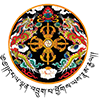FAQs
1. What are the national legislations relevant to water resources?
Water Act of Bhutan, 2011
Water Regulation of Bhutan, 2014
2. What are the guidelines and standards relevant to water resources?
Bhutan Drinking Water Quality Standards, 2016
Guideline to Determine Minimum Environmental Flow Regulations for Dewatered Reaches of Hydropower Projects in Bhutan, 2019
Environmental Standards, 2020
3. National Integrated Water Resources Management Plan (NIWRMP)
3.1. What are the key features of the NIWRMP?
Formation of River Basin Committee
Formation of River Basin Management Plan
Development of Water Security Index
Formation of Water Users Associations
3.2. What is the implementation status of NIWRMP?
Of the five management basins (Amochhu, Wangchhu, Punatsangchu, Mangdechhu and Drangmechhu), NIWRMP is currently implemented in Wangchhu Basin. For Wangchhu Basin, the Wangchhu Basin Committee has been established and operationalized, Wangchhu Basin Management Plan was developed and is being implemented, the Wangchhu Water Security Index (WWSI) System was developed and the WWSI report was published.
3.3. What is the Water Security Index (WSI) system?
The WSI system is a tool used to assess the status of water security in the management basins through five key dimensions: Rural Drinking Water Supply and Sanitation, Urban Water Security, Economic Water Security, Environmental Water Security, and Disaster and Climate Change Resilience. The WSI is scored on a scale of 1-5, 1 indicating that water security is at hazardous stage and 5 at model stage. The WSI of the five management basins will contribute to Bhutan Water Security Index which will provide information on the overall status of water security in the country.
3.4. What is a Water Users Association (WUA) and how does it contribute to water resources management?
WUA is any group of beneficiaries using a particular water source for their water supply needs.
WUAs enable community ownership and maintenance of water source and supply structures.
Currently, the WUAs are either informal or non-functional. The NECS has developed the guideline for “Formation and Registration of WUA in Bhutan” which is being piloted in the Wangchhu Basin.
4. Water Quality Monitoring (WQM)
4.1. What kind of WQM does the NECS conduct?
Ambient and industrial WQM.
4.2. What parameters are monitored during WQM?
Physico-chemical parameters such as pH, Conductivity, Total Dissolved Solids, Dissolved Oxygen, Salinity and Resistivity are tested for all sites. Chemical Oxygen Demand, Biological Oxygen Demand and Fecal Coliform are tested for selected sites.
4.3. How many Dzongkhags has WQM been undertaken in till date?
12 Dzongkhags.
4.4. Who are the Competent Authorities with roles of WQM.
Royal Centre for Disease Control for drinking WQM.
National Centre for Hydrology and Meteorology for ambient WQM.
Environment Unit, Department of Industries, Ministry of Economic Affairs, for industrial WQM.
Thromdes for Sewage Treatment Plant monitoring.
NECS for overall WQM.
5. What is the process for obtaining a permit for water abstraction?
The permit for water abstraction activities not requiring Environmental Clearance under the Water Act and/or Environmental Assessment Act will be issued by the Gewog Administration within whose jurisdiction the water abstraction source point is located. In case the water abstraction is for the use in another Gewog, a copy of an application for permit will be sent to the concerned Gewog Administration.
All new water abstraction permits, other than the permits above, will be issued by the Dzongkhag Administration within whose jurisdiction the water abstraction source point is located. Notwithstanding the above, permits for groundwater abstraction activities shall be issued by the Dzongkhag Administration.
6. What is the process for dispute resolution
Any dispute relating to water use will be presented to and addressed by the concerned WUA. When there is no WUA or if the person is aggrieved by the decision of the WUA, then the dispute will be resolved by the concerned Gewog Administration. A person aggrieved by the decision of the Gewog Administration may appeal to the Dzongkhag Administration.
7. What are the buffer zone requirements?
No development activities shall be allowed within a buffer zone of one hundred (100) feet, measured from the determinable high flood level of either side, of any water body without an Environmental Clearance.
A buffer zone of a water body will be measured along the topography of its bank starting from its determinable high flood level and in case of a watercourse in a flat topography that keeps changing its course, the buffer zone will be measured from the widest determinable bank and not from the determinable high flood level.
8. What is minimum Environmental (E) Flow?
Minimum E-flow means the water regime provided within a river, wetland or other water bodies to maintain ecosystems and their benefits, where flows are regulated. “Guideline to Determine Minimum Environmental Flow Regulations for Dewatered Reaches of Hydropower Projects in Bhutan” has been developed to maintain minimum E-flow.
9. Who are the Competent Authorities for water resources management?
Ministry of Works and Human Settlement and municipal bodies (Thromde): Ensure safe, adequate and potable water supply, and proper sewage management in Thromdes.
Dzongkhag Administration in collaboration with the relevant Ministry: Ensure safe, adequate and potable water supply at Dzongkhag, Dungkhag, Gewog and Chiwog level.
Ministry of Health: Monitor the quality of drinking water in both rural and urban areas.
Ministry of Agriculture and Forests: Land use and irrigation, and watershed and wetland management.
Ministry of Economic Affairs: Collection, analyses and dissemination of water resources data and monitoring of water flows including discharge level and sediment for the purposes of the NIWRMP, planning, design of water resources infrastructure including dams and GLOF issues.
Ministry of Home and Cultural Affairs: Coordination of disaster preparedness and mitigation related to water.
Ministry of Education: Including water resources issues and management in the schools and institutions through awareness creation.
The Relevant Local Governments in collaboration with religious bodies and Ministry of Home and Cultural Affairs: Protection of therapeutic waters (Menchhu, Drupchhu, Tshachhu, Neychhu).
Civil Society Organization (CSO) and media: Assist in prevention of water pollution and sustainable use of water resources through education, public awareness and promoting Public Private Partnership (PPP).

